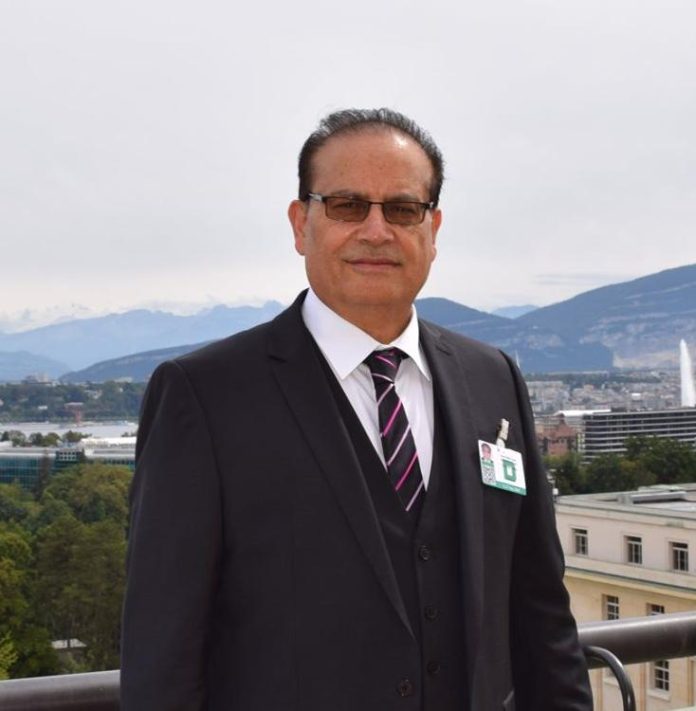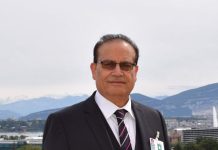Qamar Bashir
President Xi Jinping, since assuming office, has been a driving force in elevating China to unprecedented heights, not only in the country’s own history but also in the global context. He possesses the qualities of a charismatic, pragmatic, and highly composed leader, rarely seen losing his temper, displaying worry, or revealing any personal anxiety. His humility and down-to-earth nature are evident in his respectful engagement with world leaders and citizens alike, garnering widespread recognition, respect, and admiration.
Unlike other global powers, President Xi Jinping’s approach emphasizes peaceful development and self-reliance, positioning China as a model of progress rooted in shared prosperity and stability. His primary focus, however, has been on his own people, who appear to be dearer to him than anything else.
Driven by an unwavering commitment and by his belief that a capable, educated, and skilled population is vital for national progress—President Xi Jinping lifted over 100 million citizens out of extreme poverty by 2021, nearly a decade ahead of the UN’s 2030 target through targeted financial aid, agricultural support, and the construction of 1.1 million kilometers of rural roads. He ensured access to education and healthcare, raised Literacy rates, and slowed school dropout rates with the introduction of nine-year compulsory education, laying a solid foundation for long-term economic independence.
Xi’s dedication to his people extended to redirecting state resources to improve public welfare, providing health insurance coverage for over 95% of the population and expanding pensions for rural and migrant workers. He also fostered economic independence by offering incentives to 20 million small and micro-businesses, enabling sustainable incomes and supporting local economies.
While his focus remained in improving the lives of its people simultaneously, he brought much needed economic growth by unleashing the entrepreneurship qualities of Chinese people and transforming companies and corporations to higher pedestal of growth and development. He transformed them from low-cost manufacturing to high-tech and consumer-driven organizations to meet the growing needs of the domestic population and to cater to the regional and international demands. Despite daunting global economic challenges, he steered the economy with his known grit and vision and made China the second-largest economy with a GDP exceeding $18 trillion by 2021 a feat which looked impossible only a few years ago. Now his vision “Made in China 2025” is all set to drive China to become a global leader in high-tech industries, including artificial intelligence (AI), robotics, semiconductors, and 5G and in no time, China is now one of the world’s leaders in AI research and development and a leader in 5G deployment and digital transformation, extending China’s influence in global telecom, enhancing connectivity nationwide.
It was only his vision and untiring effort coupled with political and administrative acumen that since he took over, in 2013, the country’s foreign exchange reserves touched an all time high to $3.238 trillion by the end of 2023. Per capita income nearly doubled from $6,283 in 2012 to around $12,605 by 2023. Trade volume expanded from $3.87 trillion in 2012 to $6.31 trillion by 2022 illustrating China’s progress toward a more robust, internally resilient economy.
President Xi’s vision extended beyond China’s domestic prosperity; after achieving substantial growth at home, he focused on enhancing regional trade and commerce, leveraging China’s resources to support the economic health of neighboring and global partners. His 2013 Belt and Road Initiative (BRI), initially seen as a highly ambitious project with its intricate network of land, sea, rail, and air links, has since evolved into one of the world’s largest infrastructure and investment programs. Spanning Asia, Africa, Europe, and Latin America. By 2024, the BRI had attracted around $1 trillion in total investment and connected over 140 countries. Trade volume among these nations reached approximately $9 trillion, highlighting the vast economic engagement driven by the BRI, which continues to stimulate regional integration and substantial trade flows, with the potential to transform economies through enhanced connectivity and mutual growth.
President Xi’s vision of shared prosperity, rooted in economic, investment, and infrastructure diplomacy with a “win-win” approach, did not go unnoticed by global powers. However, rather than appreciating these efforts or considering President Xi’s generous offer to partner in China’s pursuit of shared prosperity, the U.S. and its allies have often placed roadblocks in the path of China’s progress. The USA and its allies launched a Chinese containment policy without appreciating President Xi’s declared policy that this world is big enough for all of us to share its bounties and immense resources without undercutting each other.
The US and its allies launched a de-risking strategy aimed at reducing excessive reliance on China, particularly in supply chains and markets. On the military front, the US started bullying its partners and allies in the Asia Pacific and Indo pacific region to encircle China in the Asia Pacific region and beyond.
The USA used the existing groups like Quadrilateral Security Dialogue (QUAD) and Australia, the United Kingdom and the United State (AUSKUS), developed a new alliance with Japan and the Philippines, for joint maritime patrols with the Philippines in the South China Sea, and restructured the US military command in Japan — the biggest upgrade to defense cooperation since the 1960s — to make them more responsive against perceived threats from China.
The U.S. has spearheaded the “Five Eyes” alliance, comprising the United States, Canada, the United Kingdom, Australia, and New Zealand, focused on intelligence sharing and countering cyber threats and foreign interference, often accusing China of intellectual property theft and using artificial intelligence for hacking and espionage. Additionally, the U.S. forged a strategic partnership with India to counterbalance China’s influence in the Indian Ocean and the region. In recent years, the U.S. has also utilized credit rating agencies like Fitch and Moody’s, which have adjusted China’s credit ratings to negative, citing perceived risks to public finances.
President Xi, fully aware of the U.S.’s efforts to place roadblocks to slow and ultimately halt China’s vision of shared global prosperity, remained undeterred. Maintaining his composure, he continued to pursue peaceful diplomacy with all nations, including the U.S. and its allies, grounded in a firm belief that his sincere intentions and dedication to shared prosperity would ultimately prevail.
Without fanfare or lofty claims, President Xi not only ensured that China became an effective and active member of existing regional and international organizations but also initiated new ones to advance China’s vision of shared prosperity and growth.
Under President Xi’s leadership, China is an effective and productive member of over 100 international and regional organizations. China became a founding member of the Asian Infrastructure Investment Bank (AIIB) to create a viable alternative to Western-led financial institutions. He uplifted Shanghai Cooperation Organization (SCO) to foster regional connectivity in Central Asia and encouraged collaborations in infrastructure, IT, and agriculture. China is one of the largest shareholders of the International Monetary Fund (IMF) and World Bank and contributes to global financial stability. China actively participates in BRICS (Brazil, Russia, India, China, and South Africa) to promote economic, political, and cultural collaboration among emerging economies. China joined Regional Comprehensive Economic Partnership (RCEP) which includes 15 countries across the Asia-Pacific, enhancing trade relations within the region. China has expanded its naval capabilities, notably in the South China Sea, to ensure peace and stability in the region.
President Xi is pursuing a pragmatic policy toward the U.S. and its allies; rather than responding with antagonism, his philosophy emphasizes relationship-building with the U.S. and Europe. His approach is rooted in cooperation, mutual respect, and shared prosperity, underscoring non-conflict, respect for core interests, and win-win collaboration. Xi advocates for peaceful coexistence and views economic interdependence as a stabilizing force, positioning China as a committed partner on global issues like climate change, health, and trade.
Leveraging areas of mutual interest, his approach counters confrontational rhetoric with constructive engagement. Championing multilateralism through platforms like the UN and WTO, Xi promotes collective problem-solving over unilateral actions. His focus on soft power diplomacy, while avoiding hard power tactics, fosters ties that diffuse aggressive stances from the U.S. and its allies, presenting China as a peaceful, responsible global leader committed to stability through inclusive development and cooperation.
President Xi has aptly recognized that people worldwide, regardless of color, creed, or race, long for peace to fulfill their dreams, raise their children in safety, and provide them with quality education. He understands that they deserve equal opportunities for growth and development, along with relief from economic and financial hardships that hinder prosperity. Aware that the world is already burdened by prolonged conflicts, he believes that humanity—now in an era marked by rapid innovation, creativity, and knowledge—comprehends both the horrors of war and the dividends of peace. More than ever, the global community yearns to end warmongering, threats, and the destruction that has devastated societies for centuries. This growing movement against war is gaining momentum, as people and nations alike reject antagonism and embrace cooperative, peaceful partnerships. Ultimately, this shift aligns with President Xi’s philosophy of shared prosperity and win-win solutions, fostering a world where all can thrive together.
Qamar Bashir
Former Press Secretary to the President
Former Press Minister to the Embassy of Pakistan to France
Former MD, SRBC, CEO, ATV

















